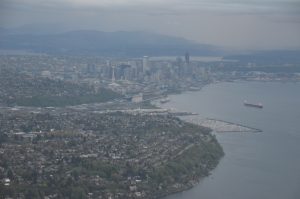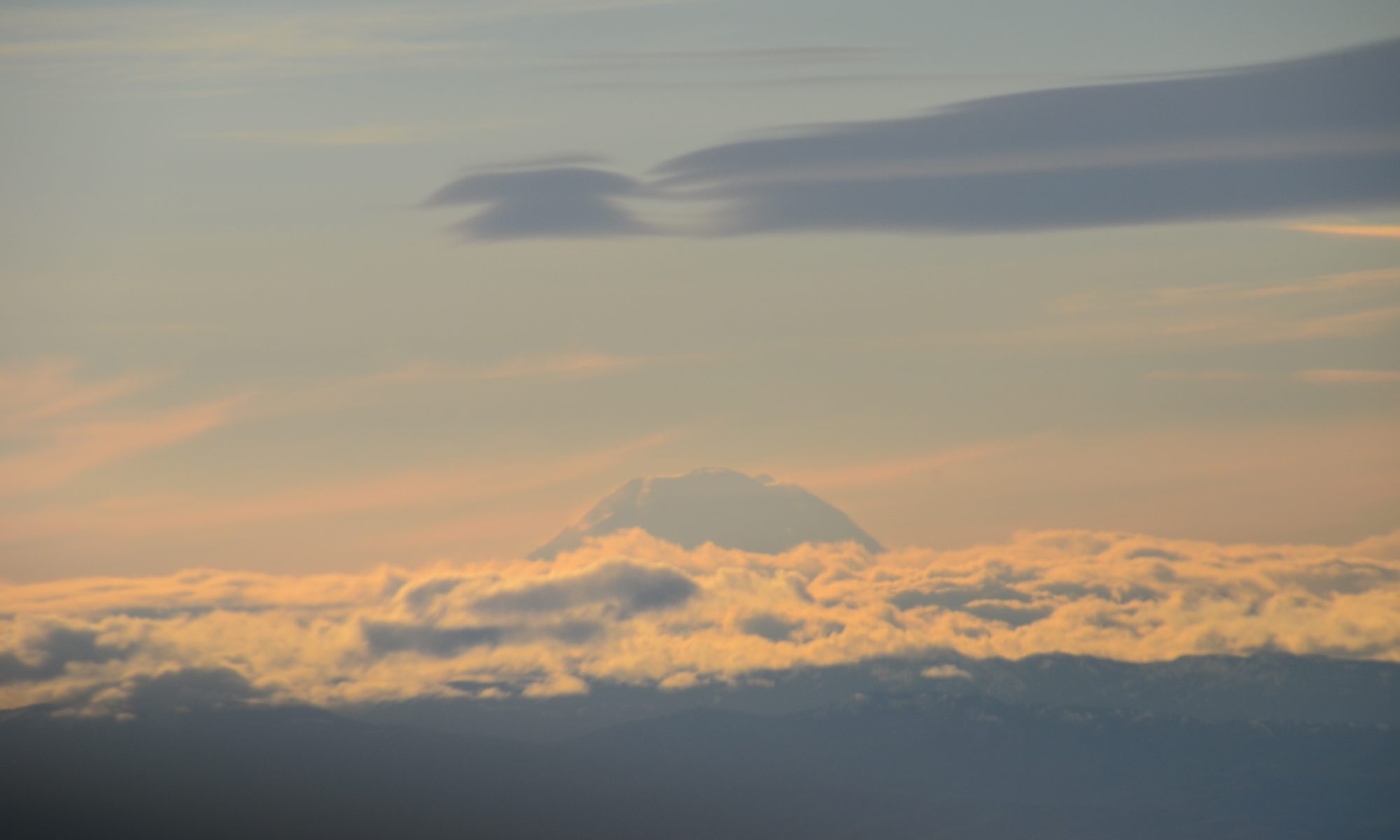Flight Date: April 30, 2017.
Over the Cascades into Seattle.
Departure: IDA
Destination: BFI (we planned for PSC, but switched to BFI)
Engine on: 4:00 PM MDT
Hobbs: 4.5
Gallons: 54.07
Distance: 494 nm
A hearty 3:00 PM breakfast in Idaho Falls provided the energy we needed to continue our westward trip. The picturesque scenery was behind us – we thought – and now all that remained were the practical issues of arriving in Seattle. The following day I had a 1:00 PM appointment at the passport office, giving us plenty of options for our arrival. In particular, we could make one long 4+ hour flight, or we can take it easy, land somewhere in central Washington, and then use Monday morning for a short hop over the Cascades to land in Seattle. We chose the later option aiming for Pasco (PSC), one of the airports in the Tri-cities area. Our departure, in beautiful VFR conditions, promised an uneventful – at least from a weather perspective – flight. Our route would eventually take us to the Pacific ocean.
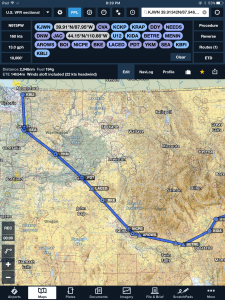
Our route circled around the southern part of Idaho’s back country. This choice added about 50 miles to our flight, but allowed us to fly with the beautiful mountains on our right without being concerned about them. We witnessed some rain showers over interesting land formations, saw snow-covered mountains in the distance, and generally enjoyed the majestic scenery.
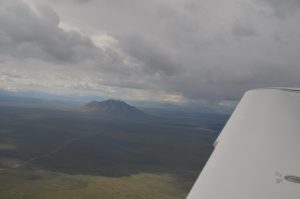
Once we were close to our destination, flying under blue skies over northwestern Oregon, we could see that the cloud cover over the Cascades was low, with tops right about our current altitude of 10,000 ft. At a distance Mount Raineer, Mount Adams, and Mount Hood, protruded over the cloud covers distinctly dominating the landscape.
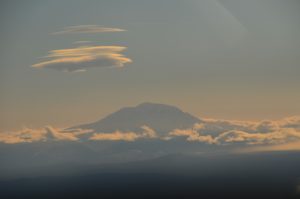
We decided that, with only one extra hour of flight, and three hours of fuel remaining, the best course of action would be to continue to Seattle. An airmet for icing blanketed the whole area where we were flying, but the low tops, and relatively high ceilings in the Seattle area (6,000 ft), made for a safe crossing of the mountains. We verified with the controllers about any icing pireps, and they confirmed our suspicion: the closest icing report was northeast of our position, about 200 nm away; no reports existed over the cascades. Armed with this information, we changed our destination to Boeing Field in Seattle (BFI).
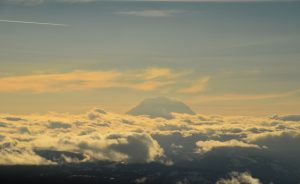
The flight over the cascades comprises about 50 nm of mountainous terrain, or 25 minutes at our groundspeed of 140 kts (we faced about 20 kts of headwind). The crossing is fast, but one can see quite a bit of activity going on below, as seen in the picture.
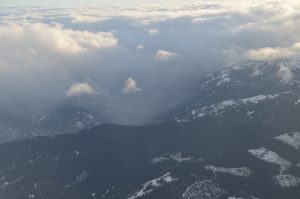
About halfway through, Seattle approach began our descent, in very wet clouds. After a few minutes, we observed ice on our windshield, though none on the leading edges yet. As our descent continued the temperature rose quickly, much faster than the implied by standard lapse rates, and by the time we were at 7,000 ft, still in very wet clouds, the ice in the windshield started to melt. Only a few minutes later approach brought us down further, and we emerged from the clouds right in front of the Seattle-Tacoma airport. The standard routing implies flying planes over the field a few thousand feet above. The scene was spectacular.
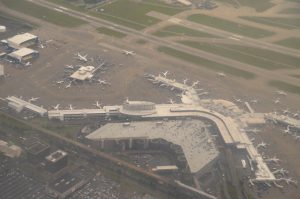
We then continued our descent over the Puget sound, circling to the north, and then east, for our landing in Boeing Field’s 13R. The approach brought us over Elliot bay, close to downtown Seattle, offering nice views which the PIC could not quite enjoy.
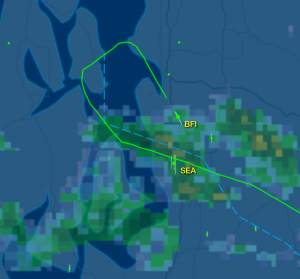
After landing we proceeded to Kenmore Aviation Services, which offers the cheapest 100LL fuel in the field. Since we landed a few minutes before they closed, they graciously let us take their courtesy car for the night. We had finished our country crossing trip, and the next day I would be able to get a passport. This was critical to obtain a work permit, but that’s a different story.
